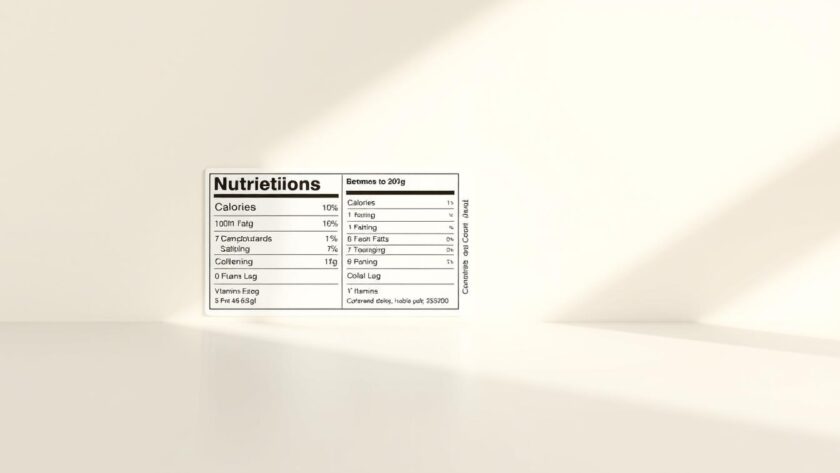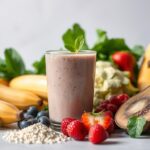In today’s complex food marketplace, understanding nutrition labels is crucial for making informed decisions about your diet. With numerous marketing claims on food packaging, it’s easy to get confused about what’s truly healthy. Nutrition labels provide standardized information that helps you navigate these choices.
By learning to effectively read labels, you can significantly impact your overall health and dietary goals. The FDA regulates these labels to ensure consistency, but deciphering the information requires some knowledge. This guide will break down each component of nutrition labels, empowering you to make healthier choices.
Understanding nutrition labels is especially valuable for individuals managing specific health conditions or dietary preferences. This article will help you become proficient in decoding nutrition information, enabling you to make informed decisions about the food you eat.
Key Takeaways
- Learn to identify and understand key components of nutrition labels.
- Discover how to use nutrition labels to make healthier dietary choices.
- Understand the role of the FDA in regulating nutrition labels.
- Gain insights into managing specific health conditions through informed food choices.
- Develop skills to navigate the complex food marketplace with confidence.
- Empower yourself to make healthier choices by decoding nutrition information.
Why Nutrition Labels Matter
## Why Nutrition Labels Matter
Understanding the importance of nutrition labels is crucial for making healthier dietary choices. Nutrition labels provide objective information that helps consumers navigate through the often misleading world of food marketing claims. By understanding what’s on a nutrition label, you can make informed decisions about your diet and health.
### The Impact on Health Decisions
Nutrition labels directly impact your health decisions by giving you control over your intake of critical nutrients. They help you identify hidden ingredients that may affect your health goals or dietary restrictions. With the information from nutrition labels, you can better manage your diet and make choices that align with your health objectives.
### Navigating Food Marketing Claims
Food marketing claims like “natural,” “low-fat,” or “healthy” can be misleading without the context provided by the nutrition label. The standardized format of nutrition labels allows for easy comparison between similar products. Research shows that consumers who regularly read nutrition labels tend to make healthier food choices. Moreover, nutrition labels can help with weight management by providing accurate information about calories and portion sizes. They are particularly important for people with specific dietary needs or health conditions.
By paying attention to nutrition labels, you can avoid being misled by false or exaggerated health claims on food packaging. This awareness empowers you to take charge of your dietary choices and make healthier decisions.
Understanding the Anatomy of Nutrition Labels
Understanding the layout ofnutrition labelsis crucial for making informed dietary choices. The information presented on these labels is designed to help consumers make healthier decisions. A typicalnutrition labelis divided into several key sections.
The Main Sections of a Nutrition Label
The main or top section of anutrition labelcontains product-specificinformation, includingserving size,calories, andnutrient information. This section provides details about theamountof variousnutrientsin the product. The bottom section typically contains a footnote that explains the % Daily Value and provides the number ofcaloriesused for generalnutritionadvice.
FDA Regulations and Standardization
The FDA has standardizednutrition labelsto ensure consistency across products, making it easier for consumers to compare different food items. The FDA regulates theserving sizeinformation based on typical consumption amounts. Different food categories may have slightly different label requirements, such as single-ingredient products or small packages.
New vs. Old Label Formats
The newnutrition labelformat, implemented in 2020, has undergone significant changes compared to the older version. Key improvements include updatedserving sizeinformation and a refreshed design to highlight importantnutritionfacts. The new format aims to provide clearer and more relevantinformationto consumers.
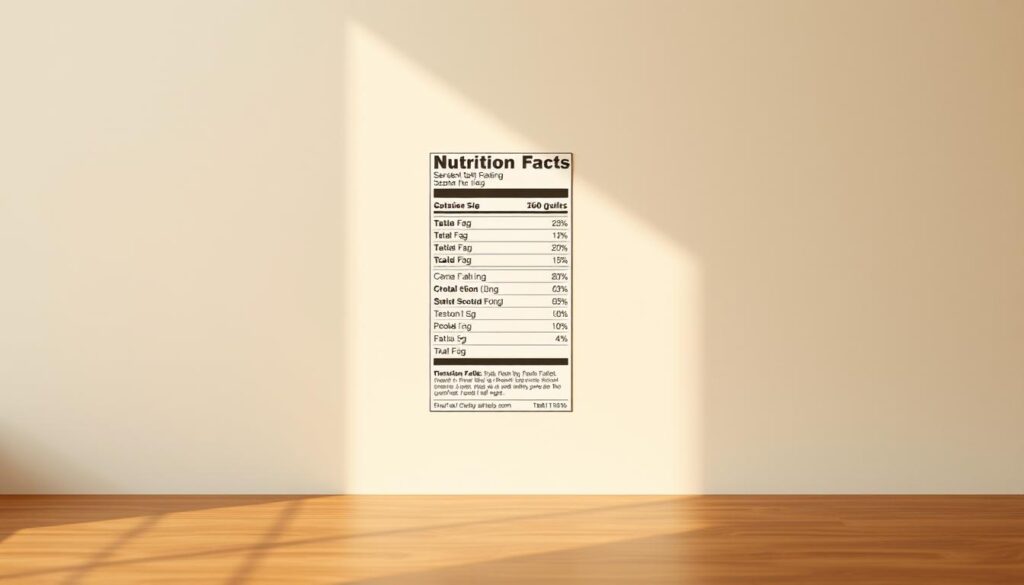
By understanding thesectionsandcontentofnutrition labels, consumers can make more informed choices about their diet. The standardized format enables easier comparison between different products, facilitating healthier eating habits.
How to Read Nutrition Labels Effectively
To effectively read nutrition labels, you need to start by understanding the serving size and the number of servings per container. The serving size is standardized to make it easier to compare similar foods, and it’s provided in familiar units, such as cups or pieces, followed by the metric amount, e.g., the number of grams (g).
Start with Serving Size and Servings Per Container
The serving size reflects the amount that people typically eat or drink. It’s not a recommendation of how much you should eat or drink. When looking at the Nutrition Facts label, first take a look at the number of servings in the package (servings per container) and the serving size. All the nutrient amounts shown on the label, including the number of calories, refer to the size of the serving.
- Identify the serving size and number of servings per container before looking at any other information.
- Understand that serving sizes are standardized by the FDA but may not reflect what most people actually consume in one sitting.
- Calculate your actual nutritional intake when consuming more or less than the listed serving size.
Calories and Energy Content
Calories are a measure of the energy content in the food you eat. Understanding the calorie information is crucial for weight management and energy balance. The label will show the number of calories per serving, helping you make informed decisions about your diet.
Reading the Nutrient List
The nutrient list on the label provides information on various nutrients, including those you should limit, such as saturated fat, sodium, and added sugars, and those you should increase, like fiber, vitamins, and minerals. Use this information to meet your specific dietary goals or restrictions.
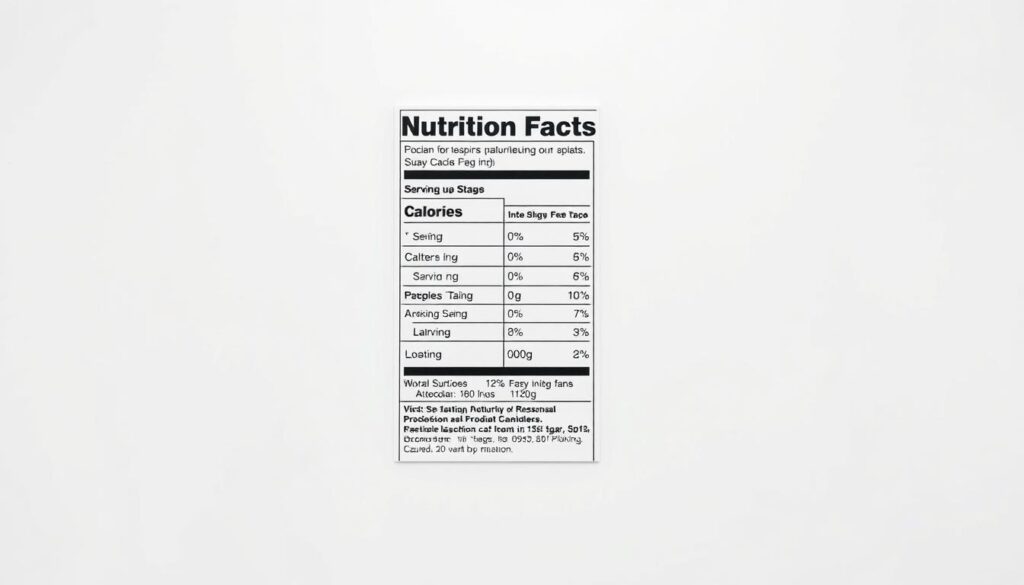
Deciphering the Nutrients Section
Understanding the nutrients section on a nutrition label is crucial for making informed dietary choices. This section provides detailed information about the various nutrients present in the food product, helping you make healthier decisions.
Nutrients to Limit: Saturated Fat, Sodium, and Added Sugars
Some nutrients, when consumed excessively, can have adverse health effects. Saturated fat, sodium, and added sugars are among those you should limit. Consuming too much saturated fat and sodium can increase the risk of heart disease and high blood pressure. Similarly, excessive intake of added sugars can make it challenging to meet your nutrient needs while staying within your daily calorie limits.
Nutrients to Increase: Fiber, Vitamins, and Minerals
On the other hand, certain nutrients are essential for maintaining good health, and you should aim to increase your intake of these. Fiber, vitamins, and minerals play vital roles in various bodily functions. A diet rich in fiber can help with digestion, while vitamins and minerals support numerous bodily processes, from energy production to immune function.
Understanding Total vs. Added Sugars
It’s essential to differentiate between total sugars and added sugars on nutrition labels. Total sugars include both naturally occurring sugars, found in foods like milk and fruit, and added sugars, which are introduced during food processing. Being mindful of added sugars is crucial, as they can significantly impact your overall sugar intake and dietary quality.
Making Sense of Percent Daily Values (%DV)
%DV is a vital component of nutrition labels that aids in evaluating the nutritional content of your diet. It represents the percentage of the Daily Value for each nutrient in a serving of the food.
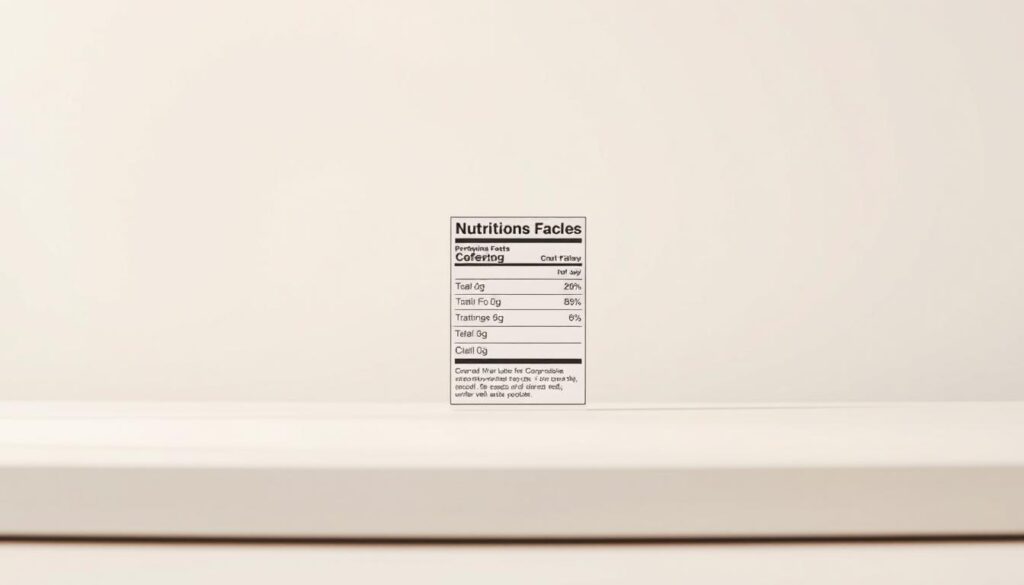
What %DV Actually Means
The %DV is based on a 2,000-calorie daily diet and indicates how much a nutrient in a serving contributes to your total daily diet. This helps you determine if a serving is high or low in a particular nutrient without needing to calculate actual grams or milligrams.
Using %DV to Compare Food Products
You can use %DV to compare similar products and make more informed choices. For instance, when choosing between two breakfast cereals, the one with a higher %DV for fiber is generally a better choice if you’re looking to increase your fiber intake.
The 5/20 Rule for Quick Assessment
A simple rule to remember is the 5/20 rule: 5% DV or less is considered low, while 20% DV or more is considered high for any nutrient. This rule helps you quickly assess whether a food is high or low in specific nutrients.
By understanding and using %DV effectively, you can make healthier dietary choices and balance your nutrient intake throughout the day.
Spotting Misleading Food Label Claims
To make healthier choices, you need to be able to spot misleading food label claims and understand what they really mean. Food manufacturers often use various tactics to make their products appear more appealing or healthier than they actually are.
Common Marketing Terms Decoded
Terms like “natural,” “multigrain,” “organic,” and “light” are often used to make products sound healthier. However, these terms can be misleading. For instance, “natural” doesn’t necessarily mean a product is free from additives or preservatives. Similarly, “multigrain” doesn’t guarantee that the product contains whole grains.
Hidden Sugar Names to Watch For
Sugar goes by many names, making it difficult to track its presence in foods. Manufacturers may list multiple types of sugar in their products, making it seem like sugar is not the main ingredient. Be aware of various names for sugar, including beet sugar, brown sugar, cane sugar, and syrups like high-fructose corn syrup, honey, and agave nectar.
| Type of Sugar | Alternative Names |
|---|---|
| Beet Sugar | Brown Sugar, Cane Sugar |
| Coconut Sugar | Date Sugar, Golden Sugar |
| Syrups | High-Fructose Corn Syrup, Honey, Agave Nectar |
Understanding “Low,” “Free,” and “Reduced” Claims
Claims like “low fat,” “sugar-free,” and “reduced sodium” are regulated by the FDA and have specific definitions. For example, “low fat” means the product contains 3g or less of fat per serving. Understanding these definitions can help you make more informed choices.
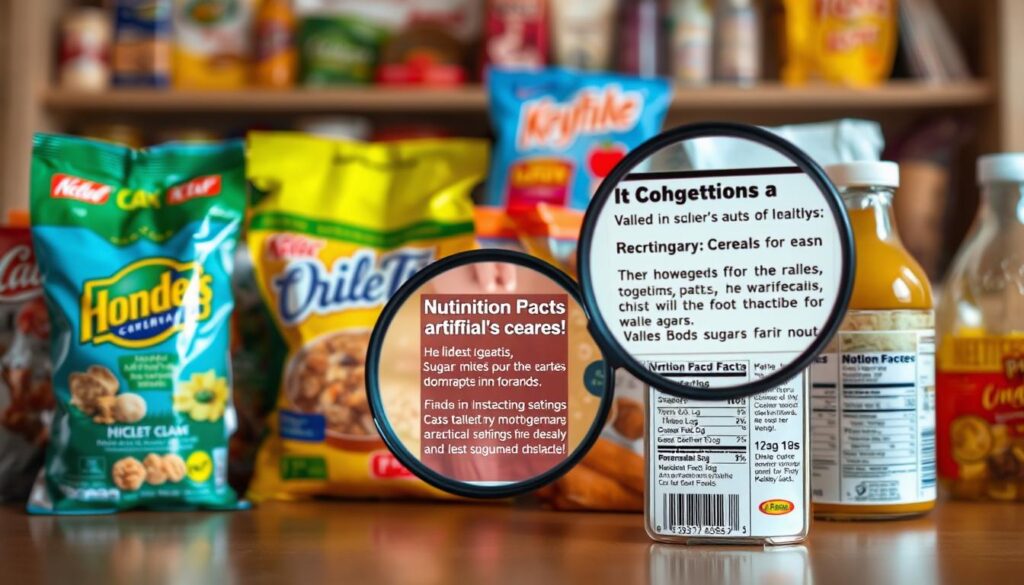
By being aware of these common marketing tactics and understanding the truth behind food labels, you can make healthier and more informed dietary choices.
Conclusion: Putting Label Knowledge into Practice
By mastering nutrition labels, you can take control of your dietary choices and make informed decisions about the food you eat. To achieve this, focus on the key elements of a label: serving size, calories, and nutrient content. Be mindful of sugars, fat (especially saturated fat), and sodium when making your choices.
When shopping, compare similar products and choose the ones with more favorable nutritional profiles. Start by prioritizing one or two aspects of nutrition labels that align with your health goals, such as reducing added sugars or increasing fiber intake. As you become more comfortable, you can expand your focus to other nutrients.
Remember, whole, unprocessed foods often don’t require labels and form the foundation of a healthy diet. By understanding and applying your knowledge of nutrition labels, you can make significant strides towards achieving your dietary goals and improving your overall health.
For further learning, explore reliable resources on nutrition and healthy eating patterns to continue enhancing your knowledge and skills.
FAQ
What is the serving size listed on a nutrition label, and why is it important?
The serving size is the amount of food that the nutrition information is based on. It’s crucial because it helps you understand the nutritional content of the food you’re consuming, making it easier to manage your diet and make healthier choices.
How do I determine if a product is high in added sugars?
Check the ingredient list for names like high fructose corn syrup, honey, maple syrup, and sucrose, which are all forms of added sugars. Also, look at the “Total Carbohydrates” and “Added Sugars” sections on the nutrition label to get an idea of the product’s sugar content.
What does %DV mean on a nutrition label, and how can I use it?
%DV, or Percent Daily Value, is a measure of how much of a particular nutrient a serving of food provides relative to the daily recommended intake. You can use %DV to compare products and ensure you’re getting the right amounts of various nutrients, with 5% DV or less being low and 20% DV or more being high.
How can I compare the nutritional value of different food products?
To compare food products, look at their nutrition labels and compare the %DV for various nutrients like saturated fat, sodium, and fiber. Choose products with similar serving sizes and lower amounts of nutrients you want to limit, and higher amounts of nutrients you want to increase.
What are some common misleading terms used on food labels, and how can I spot them?
Terms like “natural,” “healthy,” and “low-fat” can be misleading. Be aware of these marketing claims and check the nutrition label and ingredient list to verify the product’s nutritional content, rather than relying solely on the label claims.
How can I make healthier choices using nutrition labels?
To make healthier choices, use nutrition labels to limit your intake of saturated fat, sodium, and added sugars, and to increase your consumption of fiber, vitamins, and minerals. Choose products with simpler ingredient lists and be mindful of serving sizes and %DV.

